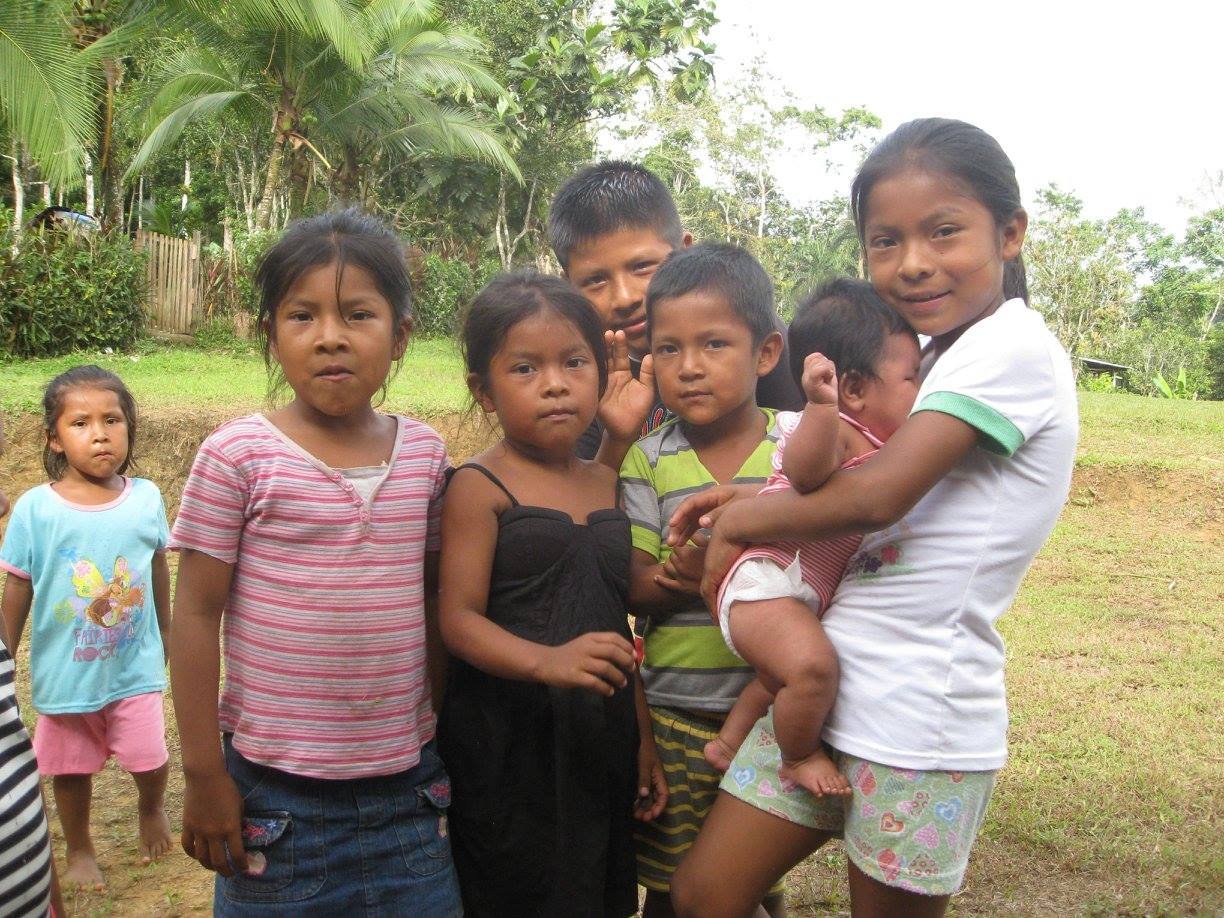Off the map in Panama: My Journey to the Naso People
In 2017 I traveled to Panama with a medical team to provide healthcare to the indigenous Naso tribe. The trip took seven days.
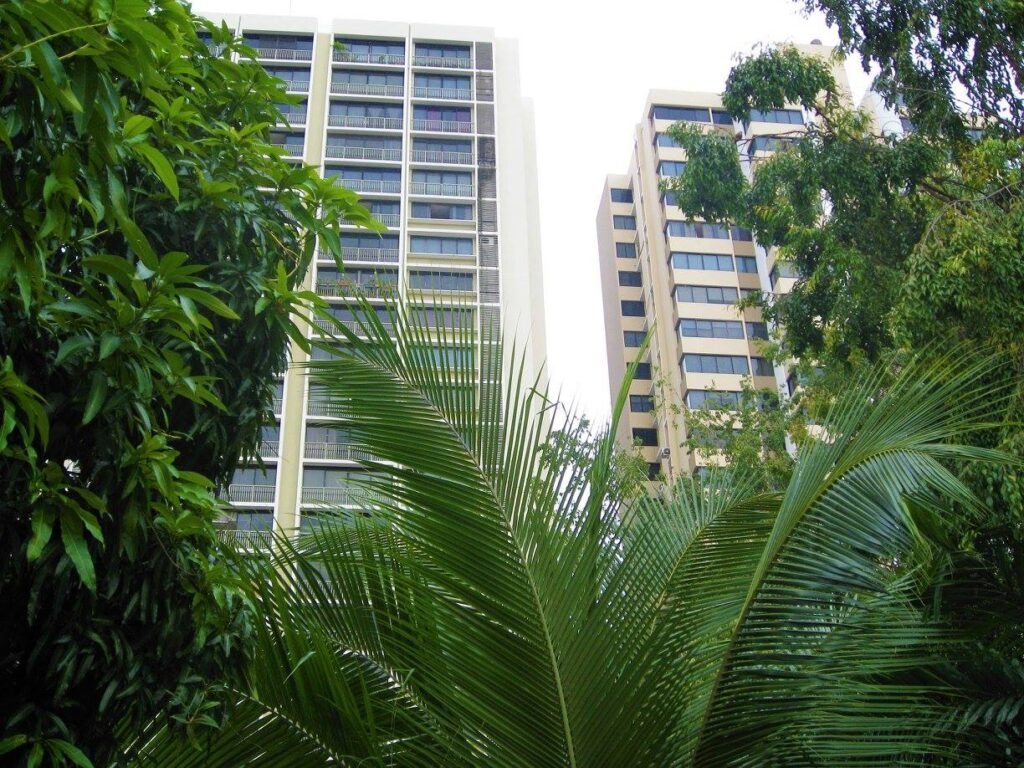
I had just arrived in Panama City, Panama with about fifteen strangers. Among us were doctors, nurses, nurse’s aids, dentists, and paramedics. Our team had one thing in common. We aimed to treat and educate northwestern Panamanians who had zero access to healthcare due to their rural location. I brought a little black pleather journal with the word “Notes” impressed on the front cover, narrating my way through the country. Our destination: the Bonyic village in Bocas del Toro, Panama.
We woke up at our hostel ‘Casa Mona Lisa PTY’ and it was incredibly hot and humid. There were locals staying there, who drank and danced until the early morning. That day, our team went to the Miraflores Locks of the Panama Canal, followed by an eight-hour bus ride to David (“Da-veed”). Palm trees and periwinkle blue mountains were in the distance on either side of the bus. All the houses were painted neon and pastel colors, most with no front doors. We adventured through Santiago and finally arrived at our camp for the night in David. The locals cooked us rice, plantains, beet and potato salad and chicken. Gas and oil were getting loaded up on our bus to give to the tribes. This would help them to reach our basecamp in Bocas (North).
The next day, we drove another five hours north to meet the Naso people, our indigenous patients for the next week. Our bus pulled to the side of an inclined, paved road. Here, there were locals selling fruits. This is the moment I tried my first rambutan. A rambutan is a red fruit, covered in soft, bright green spikes. The fruit is no larger than an egg. Once peeled, the flesh inside is similar to a grape. It was sweet and tangy but my teeth were quickly introduced to the large pit inside. I bought a whole bag full. We loaded back up. The sounds of Spanish music and laughs escaped the bus and echoed over the mountains as we all got to know each other.
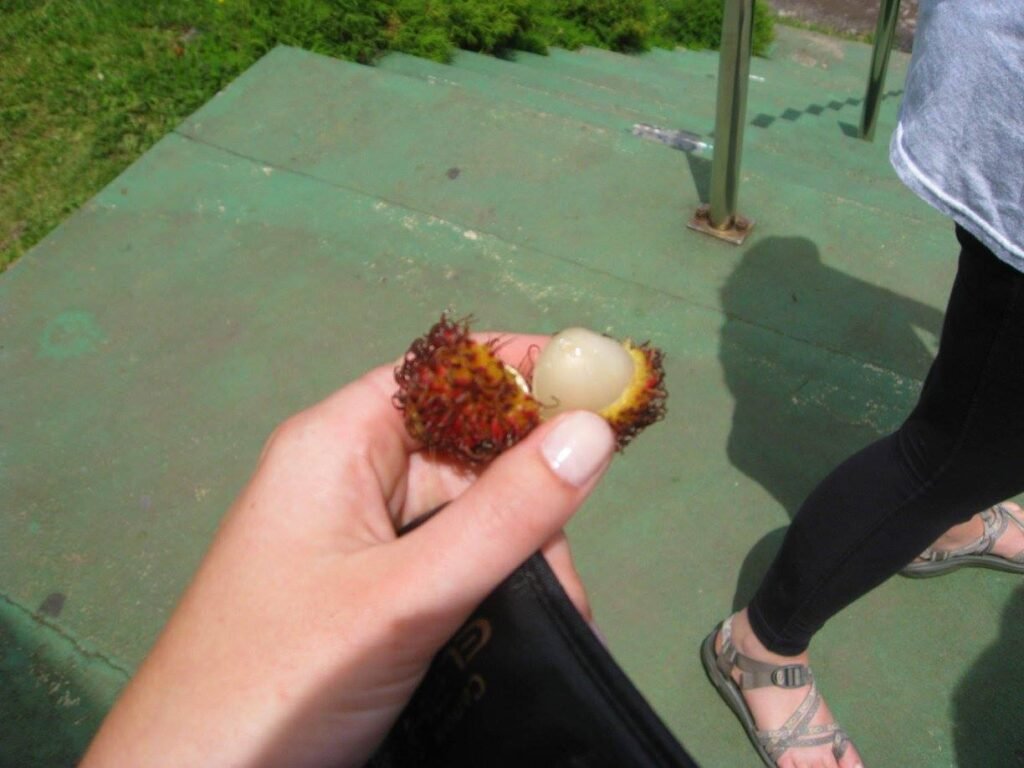
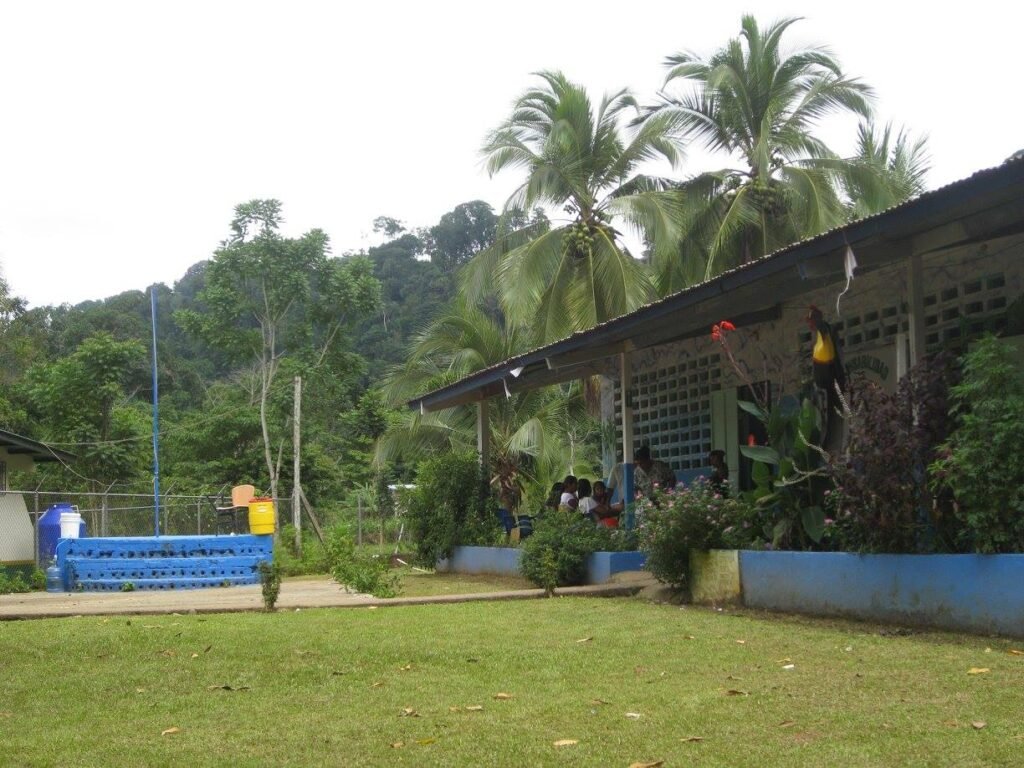
It was 9:00 pm and we arrived at our basecamp, the Bonyic village. The village was nestled in a small opening within the dense rainforest. The deep green Teribe River protected the village it surrounded. Inside this village, sat the concrete schoolhouse we would call home for the next week. It had no windows or doors, and it was hand painted inside with vibrant colors and inspiring Spanish phrases.
My comrades started to unpack their gear, sleeping mats, sleeping bags and bug nets. That’s where it hit me, I hadn’t packed a sleeping mat. (Also slightly humorous and ironic- I brought over two-hundred toothbrushes from the nursing home I worked at to give to the locals. I forgot my own toothbrush.) I gathered extra scrubs and cardboard boxes to use for cushion and made my “bed” for the next week. We packed burgers and fries on the bus from when we were in the city and that was dinner for the night. And to shower? That was a job for the Teribe River. There was one shower in the village which you needed to pay one dollar to use and with no hot water. The river was both free and a social event for our team. Sanitary? Absolutely not. A unique experience? Check.
That night, the concrete floor I called my bed didn’t even phase me. I was too overwhelmed with wonder and excitement. What was to come the next day? What would the members of the varying tribes look like? Will they be sick?
The next morning, the village woke up before us. Three native women greeted us with smiles and shook our hands. “Buenas!” The boys and men of the village play soccer in the background. It was our first day of clinic, we had expected five different tribes to travel by river to be seen and treated. One of the tribes was said to have a king, one of the last monarchs of Panama. I heard talk of a witch doctor/ herbalist but they never visited.
Clinic went well. It was extremely hot (especially in scrubs). It was hard work but I loved every second of it. We worked from 8:30-3:30 pm. I worked on my Spanish, learning simple phrases like “venga aqui” or “come here”. We saw one case of Leishmaniasis, a parasitic skin condition as a result of a sandfly bite. There were numerous parasitic diagnoses. We gave out toothbrushes and sunglasses. There was a seventy-year old gentleman who worked in fields from sun up to sun down to provide for his family. One pair of sunglasses had a such a large impact on his life. Ibuprofen and Tylenol were dispensed to nearly each patient as they all had aches and pains. Today was as thrilling as it was fulfilling. “Felt much like a hero.” I wrote. After clinic the whole crew took a dip in the river again. I spoke with Dr. Bob, a sixty-something year old family medicine doctor, about his life adventures. There is something so special about watching a stranger transform into a friend.
On clinic day two I woke up to two cockroaches, one crawling on me and the other exploring my cardboard mattress. I had several ant bites, but they were minor. “Bug net proves not effective.” I scribbled. We had a traditional Panamanian breakfast “hojaldas con salchichas” consisting of sausage, papaya, pineapple, sweet peppers and two pieces of handmade pita-like bread.

We transported villagers in boats so the patients came in waves. The most interesting case we saw was a two-month old baby with a cleft palate. The cleft palate resulted in an ear infection for him. One of our docs prescribed amoxicillin. Our company, IMR, was eventually able to fund surgery for the little guy and the team eventually brought formula to him. He only weighed seven pounds. His mother was fourteen and his father had to have been in his forties. They were feeding him mashed plantains in water as they couldn’t afford formula. We bathed in the river again today, played the game ‘Spoons’ using protein bars instead of spoons. More laughs ensued and again, strangers turned to friends.
4:00AM I woke up to go to the bath house and I saw a shooting star.
On day three of clinic, it was the hottest day so far. “I’m starting to get sick of the smell of myself. Washing clothes in the river just isn’t cutting it.” My favorite part of today was giving a young boy a bouncy ball. He hadn’t smiled the whole day until I handed him the ball. His face lit up. When I saw that smile on his face the whole trip seemed worth it.
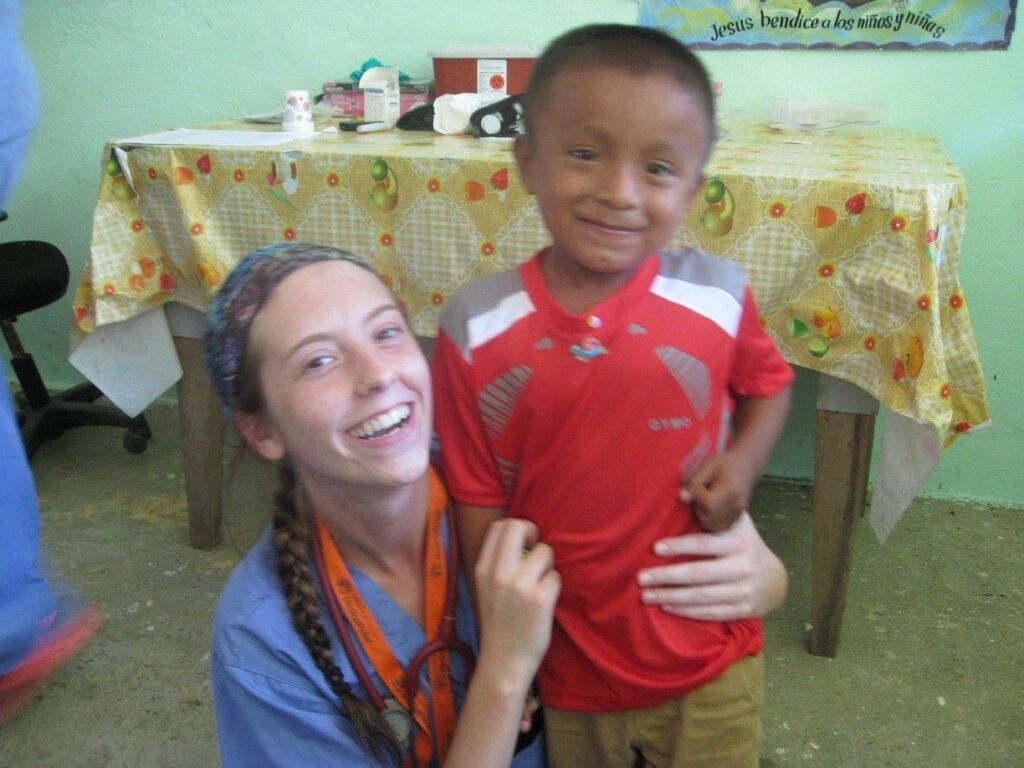
We went for a “night walk” through the jungle to try and see some animals. We only saw some frogs. At night while we slept, the windowless schoolhouse allowed for all the jungle sounds to waft in. I heard howler monkeys across the river every night, they sounded like angry dogs. There was a constant buzzing and random high pitched chirps coming from the frogs and insects. Somehow, the chaotic sounds of the jungle molded into each other to create one peaceful rhythm.
We only saw seventy patients the next day. At the daily team meeting, it was announced that the next day, we would be bringing the clinic to the next village as opposed to them coming to us. The next village, Tres Piedras, meaning “three rocks” was only accessible by boat and it was thirty minutes up the river. The chief of the tres piedras village was to retrieve us in their boats to take us to his village.
The following morning, we hauled our duffle bags full of medical supplies down to the Teribe River. We were greeted by four hand carved wooden boats. They were narrow and long with either bamboo or wooden seats like a canoe. The boats had small engines, and the villagers stood at the front holding long wooden sticks to act as the boats guide. Julia was from Philadelphia, one of the other team members my age. She had long, thick red hair and freckles. I thought she was a beautiful soul and well versed in Spanish which I looked up to. She and I had the opportunity to ride with the chief of the Tres Piedras village. He was the guide for our boat.
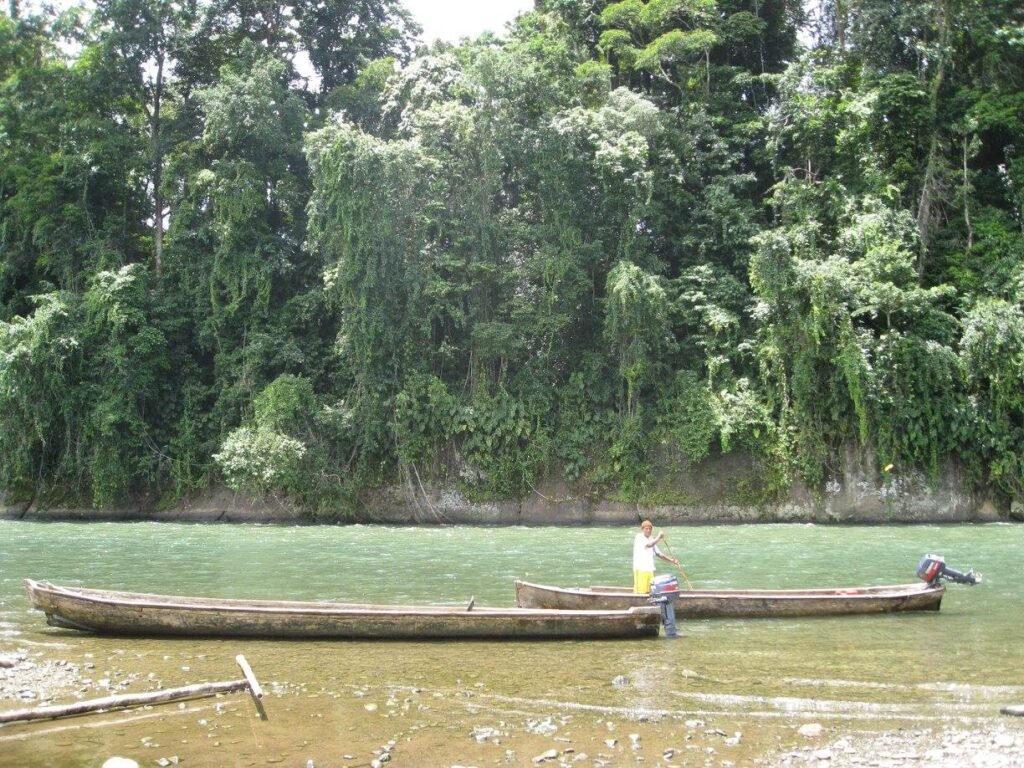
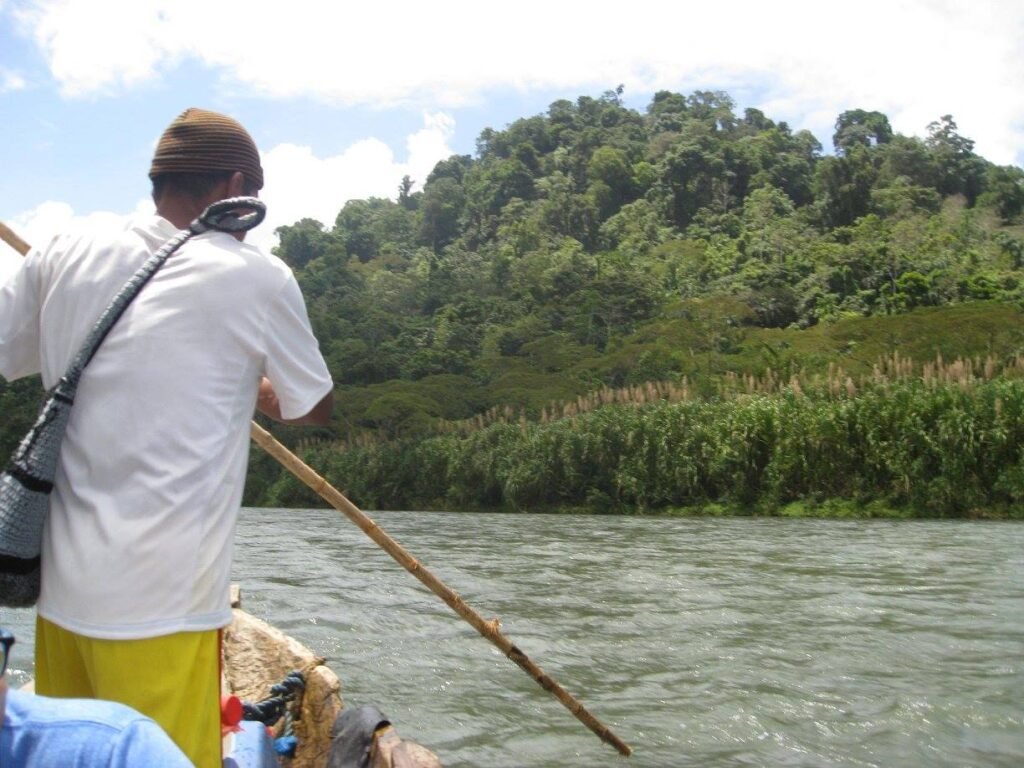
The Teribe River was deep and emerald green. At the river’s edge, the emerald green hues blended into a mint green that then tapered into an olive green. It took thirty minutes to reach the next village. The ride there was something I will never forget. The flora that hugged each side of the river grew high and tall. Plants grew on trees with odd shaped leaves. Trees grew above other trees, creating what felt like two vertical walls guarding the river. It was lush and thick and it housed animals like those barking howler monkeys and jaguars. The sun was shining, the river current was strong, and the water was cool and refreshing. Julia looked at me and said “Can we just take a moment and think about how we are in the most remote province in Panama, on the Teribe River, on the chief’s boat, on our way to a village that has no road access.” “Such a moment of bliss” I wrote. “I am so thankful”.
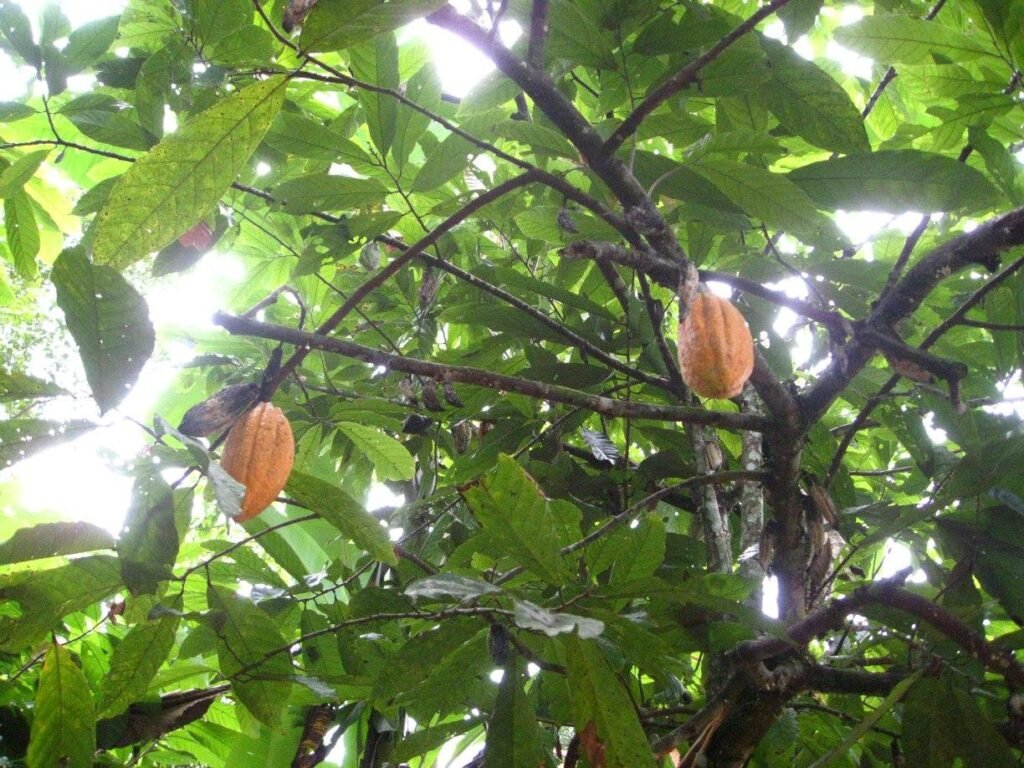
The boat pulled off to the side of the river where the water turned flat and calm with aquatic plants peaking from the surface. A white horse stood at the riverbank, eating some grass. We made it to Tres Piedras. Muddy paths lead the way to a concrete staircase leading towards the village. Orange, grapefruit and cacao trees lined the staircase. We sampled all three of the tree’s fruits. The sound of Panamanian drums lingered down the staircase, and for a moment, my life seemed like a movie. The music added to the suspense of what this village might look like. Will this tribe look like the others? Three little girls glared down the staircase at us as we waited for the other boats to arrive.
Once at the top, the trees opened to reveal a vast green lawn at the base of a small mountain. There was a schoolhouse to the left and tiny houses stacked on top of one another as the elevation climbed. The drums we heard were louder now, contributing even more to my adrenaline-fueled excitement. The schoolteacher greeted us and showed us where to set up the clinic. We stayed for three hours and saw one hundred and fifty villagers. This particular village had more children than the Bonyic village. They were all so inquisitive with their smiles and stares. They ran up to me as soon as they saw my camera. They loved having their pictures taken. We went back home to our basecamp. I bought handmade bracelets from a local woman and her daughter, along with several hand carved wooden pieces made from the balsa tree. The balsa tree grew quickly and provided lightweight but dense wood for the locals to craft with. That night Julia and I talked for hours about our life goals while gazing up at the stars. They sparkled and gleamed as they were completely unobstructed by city lights.

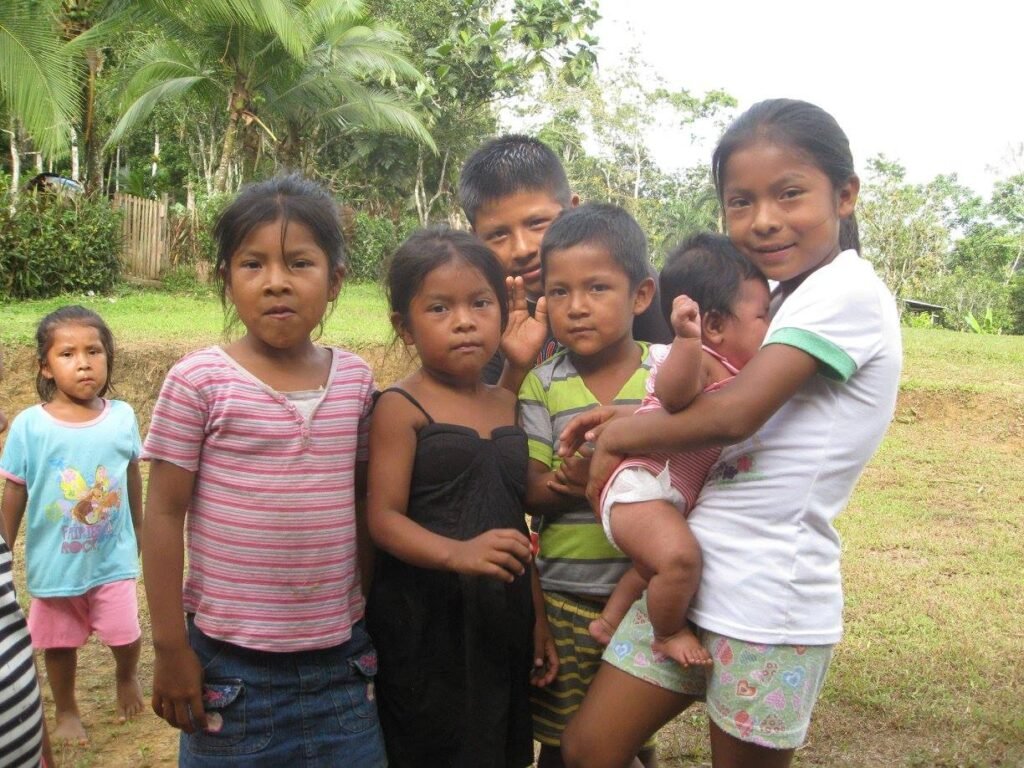
I got the best sleep of the trip that night. It was our last day of clinic, a half day. Our group packed up and said goodbye to the locals that hosted us. We saw a total of six hundred and thirty patients. We headed to David to stay at a church in the middle of the jungle. The doctors taught us to place stitches on bananas and how to start IV’s. We had to be up early the next day for an eight-hour bus ride back to Panama City. “I’ve met such happy, selfless people here. This country is beautiful. This is what I came for. I am so grateful; I feel so fulfilled.”
There was something enthralling about drinking Smirnoff Ice with the fifteen of my medical team mates on the bus back to the city. Strangers ranging from eighteen to over seventy were laughing, singing and sharing life stories. We became humbled and gratified together. The team arrived back to the city at the same hostel we started the journey with. We went out to dinner, had drinks and went out dancing at a casino/dance club. My last journal entry written in the font “Smirnoff Vodka” reads “I learned how to salsa dance on the rooftop with the owner of the hostel. Hot, sweaty, drunk and happy.”
Panama will be a special trip to me for three reasons. It was my first solo international travel experience. I proved to myself I could do it and eradicated all sense of self-doubt I had. It showed me the “high” of helping those in need, the goosebumps I get from healing the sick and taking people’s pain away. Panama inspired me to become a nurse. Lastly, Panama was the spark that ignited my eternal passion for travel.
“The very basic core of a man’s living spirit is his passion for adventure. The joy of life comes from our encounters with new experiences and hence there is no greater joy than to have an endlessly changing horizon, for each day to have a new and different sun.”
-Christopher McCandless

